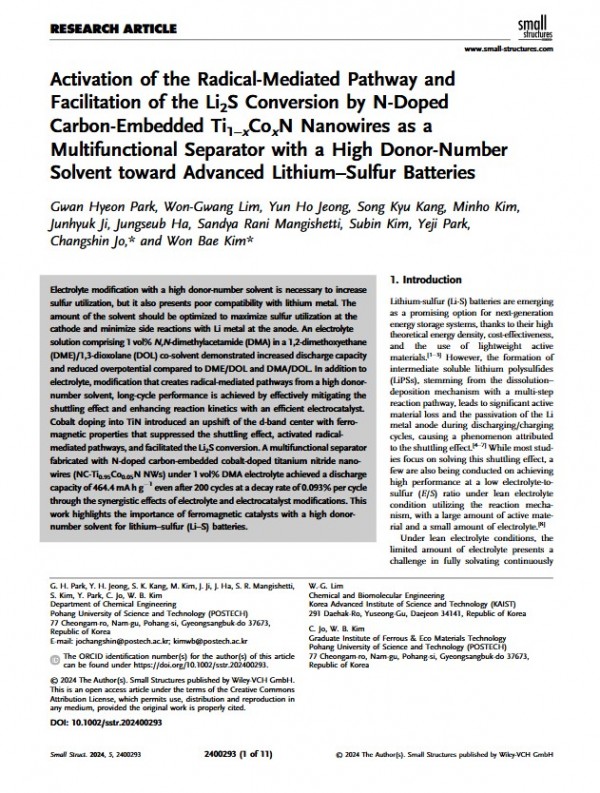NEDL [NEDL] Prof. Changshin Jo: Activation of the Radical-Mediated Pathway and Facilitation of the Li2S C…
페이지 정보

작성자 최고관리자
댓글 0건 조회 677회 작성일 2025-06-16 15:53
본문
Abstract
Electrolyte modification with a high donor-number solvent is necessary to increase sulfur utilization, but it also presents poor compatibility with lithium metal. The amount of the solvent should be optimized to maximize sulfur utilization at the cathode and minimize side reactions with Li metal at the anode. An electrolyte solution comprising 1 vol% N,N-dimethylacetamide (DMA) in a 1,2-dimethoxyethane (DME)/1,3-dioxolane (DOL) co-solvent demonstrated increased discharge capacity and reduced overpotential compared to DME/DOL and DMA/DOL. In addition to electrolyte, modification that creates radical-mediated pathways from a high donor-number solvent, long-cycle performance is achieved by effectively mitigating the shuttling effect and enhancing reaction kinetics with an efficient electrocatalyst. Cobalt doping into TiN introduced an upshift of the d-band center with ferromagnetic properties that suppressed the shuttling effect, activated radical-mediated pathways, and facilitated the Li2S conversion. A multifunctional separator fabricated with N-doped carbon-embedded cobalt-doped titanium nitride nanowires (NC-Ti0.95Co0.05N NWs) under 1 vol% DMA electrolyte achieved a discharge capacity of 464.4 mA h g−1 even after 200 cycles at a decay rate of 0.093% per cycle through the synergistic effects of electrolyte and electrocatalyst modifications. This work highlights the importance of ferromagnetic catalysts with a high donor-number solvent for lithium–sulfur (Li–S) batteries.
관련링크
- 이전글[NEDL] Prof. Changshin Jo: Free-Standing Carbon Materials for Lithium Metal Batteries 25.06.16
- 다음글[NEDL] Prof. Changshin Jo: Aqueous Acidic Pectin-Based Solution as Electrolyte and Pretreatment Solution for Zinc Ion Battery Anodes 25.06.16
댓글목록
등록된 댓글이 없습니다.




